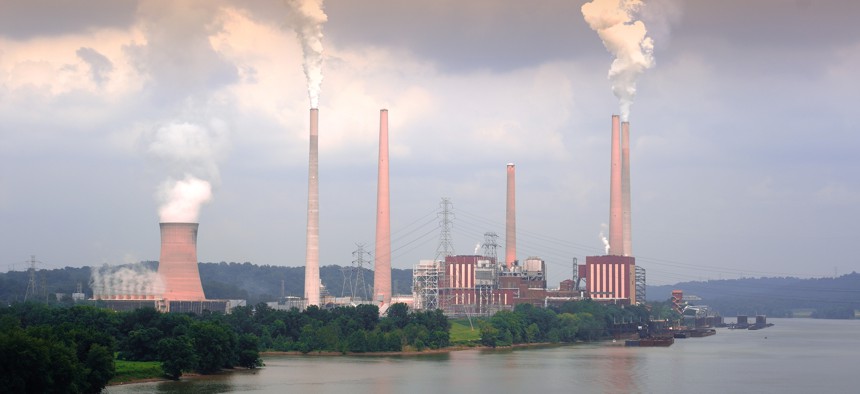Ohio Explores Compliance Pathways to Clean Power Plan Amid Objections

A coal plant on the Ohio River near Cincinnati, Ohio. Anne Kitzman / Shutterstock.com

Connecting state and local government leaders
“We are taking a two-pronged approach,” says Adam Ward, assistant chief of Air Pollution Control for the Ohio Environmental Protection Agency.
Like 26 other states suing the federal government over its Clean Power Plan, Ohio believes the U.S. Environmental Protection Agency has exceeded its authority under the Clean Air Act.
Yet Ohio is simultaneously exploring how best to comply with the Obama administration’s new energy policies, which call for the state to reduce its carbon emissions 37 percent by 2030.
“We are taking a two-pronged approach,” said Adam Ward, assistant chief of Air Pollution Control for the Ohio Environmental Protection Agency . “We are challenging the rule in court because we don’t think it’s legal. But at the same time, we want to do our due diligence and we want to do right by the citizens and manufacturing base of Ohio by figuring out what options we have available to us and really try to figure out what the best pathway for compliance is for Ohio.”
The Clean Power Plan is likely to have major ramifications on Ohio’s energy portfolio. The state currently generates about 60 percent of its power from coal plants and a majority of the rest from natural gas and its two nuclear facilities. Very little power in Ohio comes from solar, wind or other renewable sources, Ward said, but the Clean Power Plan would require that Ohio utilities produce 25 percent of its electricity from renewable sources by 2025. The state legislature halted those requirements, but federal momentum is trending toward renewable.
“People need to understand clean energy is here,” EPA Administrator Gina McCarthy said last week while touring a solar plant in Toledo. “It’s growing jobs. It’s creating innovation. This is not a painful exercise to move toward clean energy. Renewables deserve to be treated as a utility source.”
Meanwhile, Ohio Gov. John Kasich has called for a legislative compromise somewhere below the 25-percent renewable mandate as other Ohio officials are “developing a very robust and outreach program” to gather feedback from “all four corners of the state,” Ward said.
The Government Executive Media Group’s Frank Konkel recently traveled to Columbus to discuss the Clean Power Plan and its ramifications with Adam Ward , assistant chief of Air Pollution Control for the Ohio Environmental Protection Agency.
Watch the interview:

NEXT STORY: For Cities, Mapping Minority-Owned Small Businesses Requires Face-to-Face Engagement




